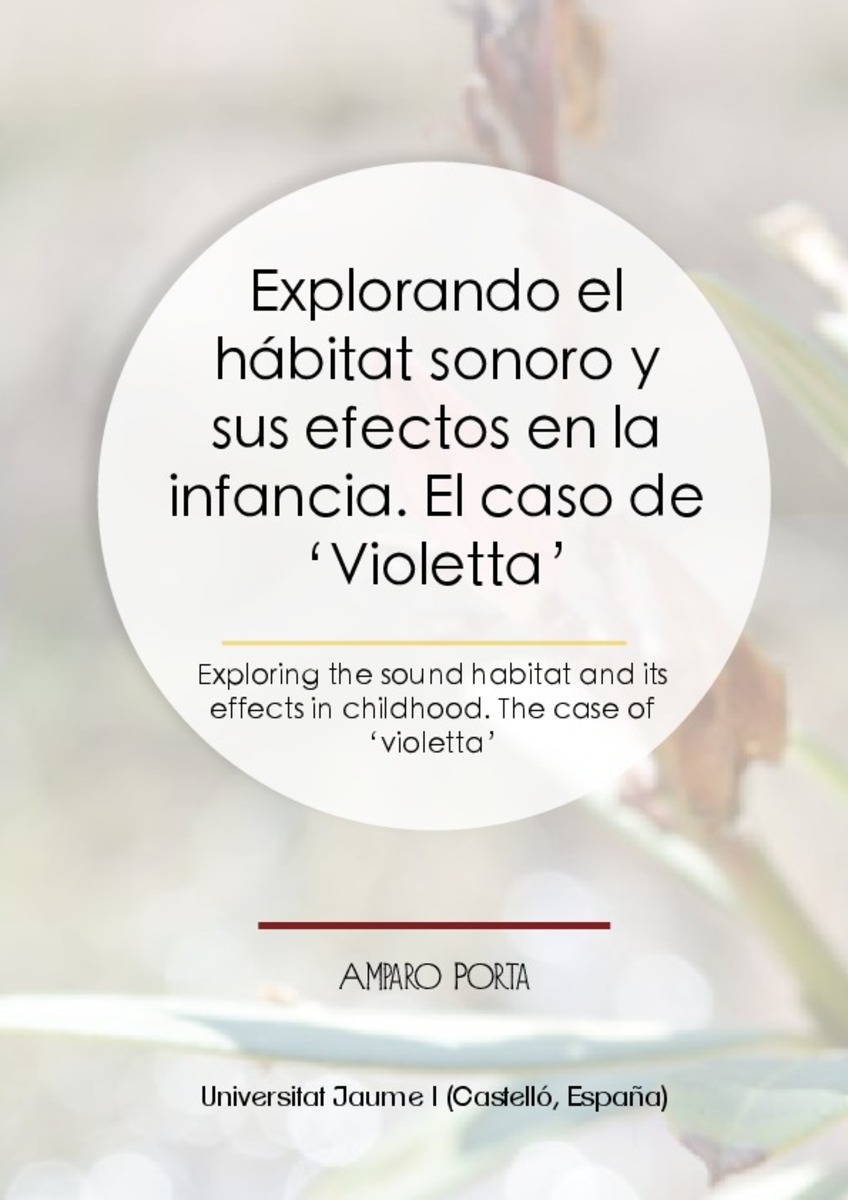Mostrar el registro sencillo del ítem
Explorando el hábitat sonoro y sus efectos en la infancia. El caso de ‘Violetta’
| dc.contributor.author | Porta, Amparo | |
| dc.date.accessioned | 2019-07-22T13:05:01Z | |
| dc.date.available | 2019-07-22T13:05:01Z | |
| dc.date.issued | 2019-05 | |
| dc.identifier.citation | PORTA, Amparo. Explorando el hábitat sonoro y sus efectos en la infancia. El caso de ‘Violetta’. ARTSEDUCA, 2019, no 23, p. 10-35. | ca_CA |
| dc.identifier.issn | 2254-0709 | |
| dc.identifier.uri | http://hdl.handle.net/10234/183332 | |
| dc.description.abstract | Los últimos cincuenta años han supuesto un periodo de grandes cambios en la educación, en los que aparecen de manera destacada sus relaciones con la identidad y relaciones del niño con el entorno. Los medios audiovisuales están implicados en este cambio por su alto impacto en la infancia, por ello se hace necesario conocer las características de la música del cine y la tv para estudiar sus efectos y buscar alternativas educativas. Este artículo se centra en una pequeña parte del problema: el signifcado y sus relaciones con el hábitat sonoro. Por ello utiliza como metodología el análisis cuantitativo para estudiar las características de la banda sonora, el análisis musical para comprenderla y el análisis del discurso para acceder a su signifcado y posición social. Con todo ello se ha desarrollado un diseño de investigación que ha sido aplicado a un estudio de caso, la serie televisiva Violetta, como muestra de la música cotidiana preferida de una amplio sector de la población infantil. | ca_CA |
| dc.description.abstract | The last ffty years have been a period of great change in education, appearing prominently relations with the child’s identity and relationships with the environment.. The audiovisual media are involved in this change for its high impact on children, therefore it is necessary to know the characteristics of the music of flm and tv to study its effects and seek alternative. This article focuses on a small part, meaning and its relations with the sound habitat. Therefore used as quantitative analysis method to study the characteristics of the soundtrack, musical analysis to understand and discourse analysis to access their meaning and status. With all this we have developed a research design that has been applied to a case study, Violetta TV series, as shown everyday favorite music from a large segment of the child population. | ca_CA |
| dc.format.extent | 26 p. | ca_CA |
| dc.format.mimetype | application/pdf | ca_CA |
| dc.language.iso | spa | ca_CA |
| dc.publisher | Ana M. Vernia Carrasco | ca_CA |
| dc.relation.isPartOf | Artseduca, 2019, no. 23 | ca_CA |
| dc.rights.uri | http://creativecommons.org/licenses/by-sa/4.0/ | |
| dc.subject | banda sonora | ca_CA |
| dc.subject | análisis cuantitativo y cualitativo | ca_CA |
| dc.subject | cine y televisión | ca_CA |
| dc.subject | Música | ca_CA |
| dc.subject | educación musical | ca_CA |
| dc.subject | soundtrack | ca_CA |
| dc.subject | quantitative analysis | ca_CA |
| dc.subject | classification | ca_CA |
| dc.subject | film and television | ca_CA |
| dc.subject | listening | ca_CA |
| dc.subject | music | ca_CA |
| dc.subject | music education | ca_CA |
| dc.title | Explorando el hábitat sonoro y sus efectos en la infancia. El caso de ‘Violetta’ | ca_CA |
| dc.title.alternative | Exploring the sound habitat and its effects in childhood. The case of ‘violetta’ | ca_CA |
| dc.type | info:eu-repo/semantics/article | ca_CA |
| dc.identifier.doi | http://dx.doi.org/10.6035/Artseduca.2019.23.1 | |
| dc.rights.accessRights | info:eu-repo/semantics/openAccess | ca_CA |
| dc.type.version | info:eu-repo/semantics/publishedVersion |
Ficheros en el ítem
Este ítem aparece en la(s) siguiente(s) colección(ones)
-
EDE_Articles [406]
-
Artseduca_2019_no.23 [17]








